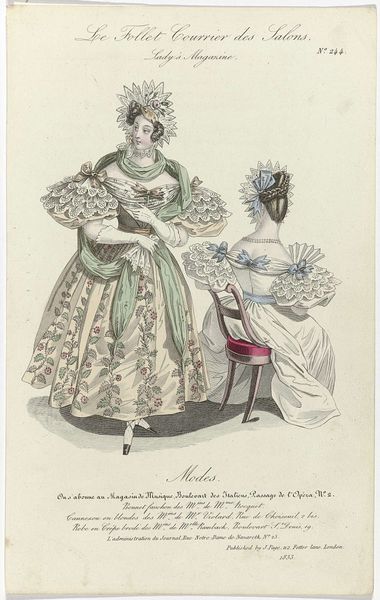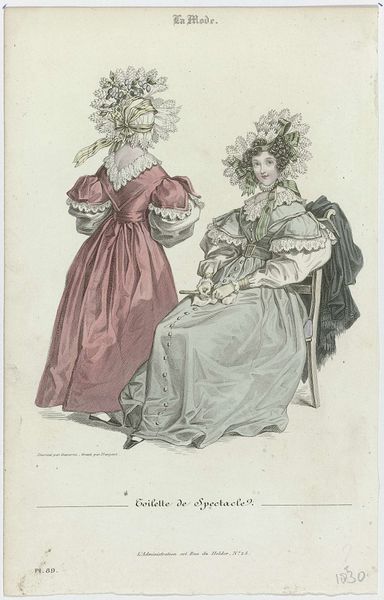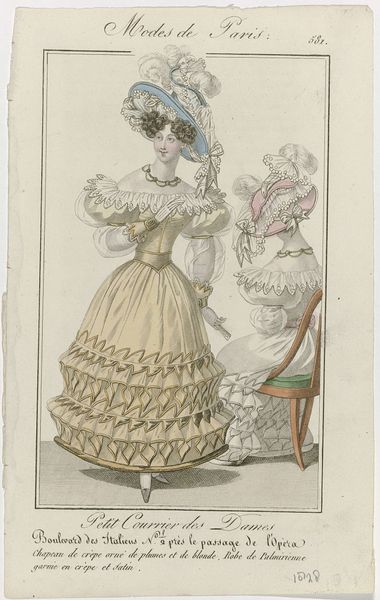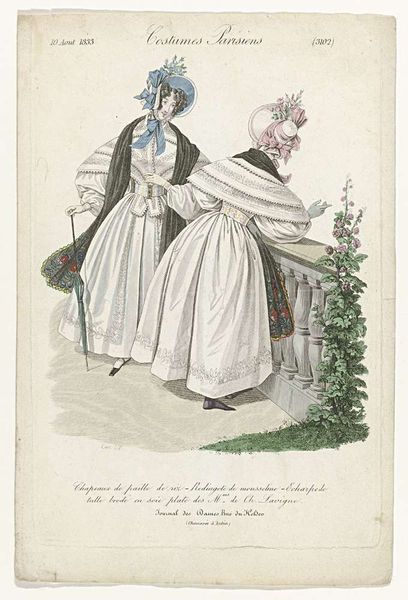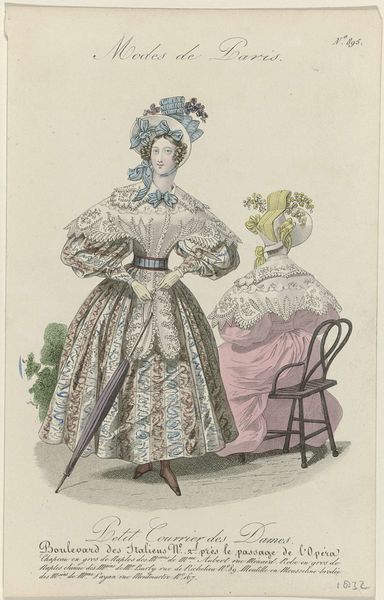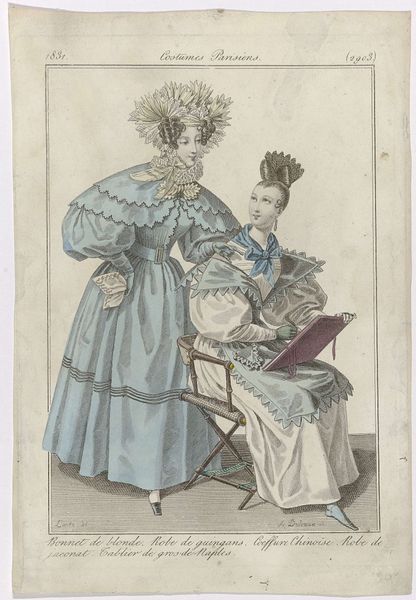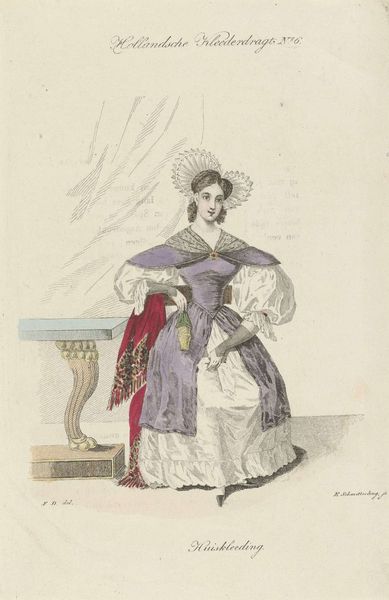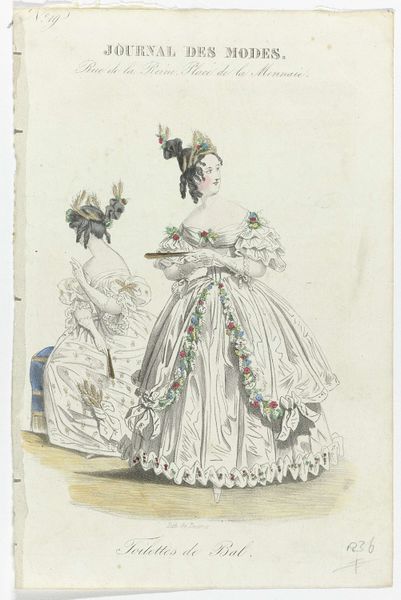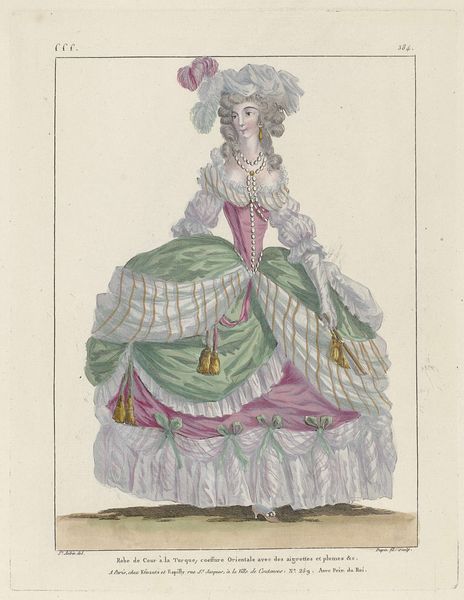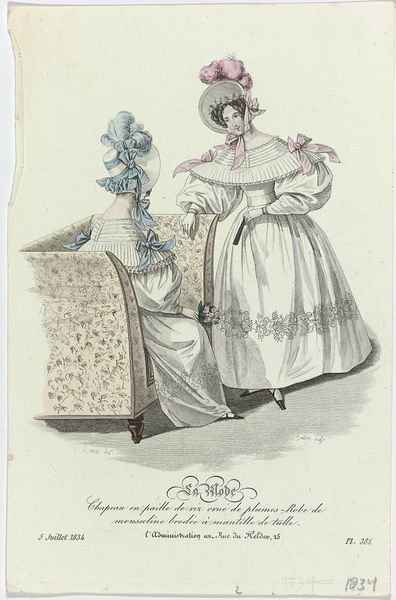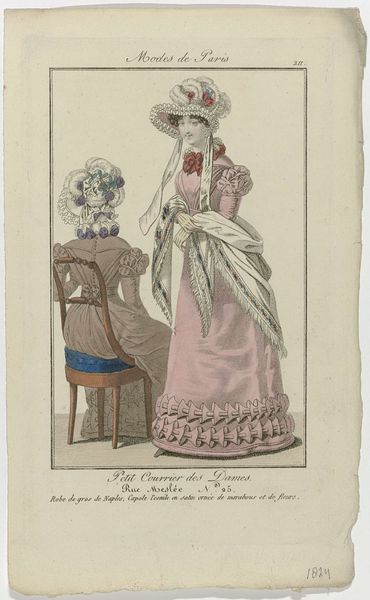
# print
#
figuration
#
romanticism
#
watercolour illustration
#
decorative-art
Dimensions: height 219 mm, width 134 mm
Copyright: Rijks Museum: Open Domain
Editor: This print, titled "La Mode, 18 août 1832," by August Delvaux, depicts two women in fashionable dresses of the time. It’s a lovely watercolour illustration, but I'm particularly struck by how much material goes into these sleeves and the almost industrial nature of the embellishments. What does it bring to mind for you? Curator: This image is a powerful document of textile production and consumption in the 19th century. It’s easy to focus on the elegance, but consider the labor involved: from the raw materials like the cotton muslin mentioned in the caption, to the spinning, weaving, and embroidery. Notice how the prints themselves mimic textures, adding to the impression of opulence. Editor: So you’re saying the image itself is connected to production in some ways? Curator: Exactly. Prints like these drove desire and ultimately, demand for these textiles. These images, though seemingly passive fashion plates, participated directly in the economic engines driving textile production. Editor: I hadn’t considered the print as part of that cycle. The amount of trimming on these gowns… did that imply something specific about status and wealth at the time? Curator: Definitely. But think beyond simple ostentation. The layers, the trimmings – each represent the investment of labor and capital, solidifying social standing through conspicuous consumption. And how do you think this kind of imagery impacted gender roles and expectations around fashion? Editor: I suppose it reinforced them, positioning women as both the consumers and the spectacle of fashion. It really makes you think about the supply chain, even then. Curator: Precisely. Understanding the materiality and means of production provides critical insights into the social and economic structures of the period. Next time you view it, reflect on this interplay of creation and consumption.
Comments
No comments
Be the first to comment and join the conversation on the ultimate creative platform.
